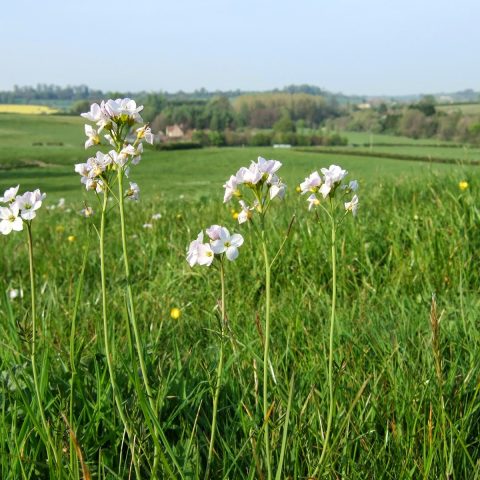Seagrass Ocean Rescue's Story
The "Seagrass Ocean Rescue" project is led by a multi-stakeholder partnership between Project Seagrass, WWF, Pembrokeshire Coastal Forum, Swansea University and Cardiff University. The goal of the pilot initiative is to restore two hectares of seagrass in Dale, West Wales, and is based on research carried out at Swansea University on the potential for seagrass meadow restoration in the UK.
It is estimated that 92% of seagrass in British coasts have been lost in the last century due to coastal development and sea-water pollution. Yet, seagrass provides a variety of benefits for living beings and their natural ecosystems. First and foremost, seagrass meadows are carbon sinks: working at quicker and higher rates than ecosystems like tropical forests, one hectare of seagrass can store around 400kg of carbon dioxide per year!
Additionally, seagrass meadows can act as fish habitats, promoting biodiversity as it attracts and hosts a variety of marine species. At the same time, the meadows can be fish nurseries too, supporting local fishing livelihoods. And, last but not least, seagrass helps to promote overall ocean health through its pollutant-nutrient filtration properties and aids coastal protection efforts by hindering coastal erosion.
The ongoing process of seagrass restoration in Dale involves underwater gardening led by partners and volunteers through three key steps. Firstly, seagrass plant seeds are carefully harvested and collected from Britain's remaining seagrass meadows. Afterwards, the seeds are taken to Swansea University's laboratories for sorting and preparation, with suitable seeds placed in small hessian bags that degrade naturally. Lastly, the seed-filled hessian bags are laid and planted on the seafloor of the underwater area to be restored. Given that seagrass is a plant commonly found in shallow coastal waters in the uppermost layer of the sea, both picking and planting seeds is not a difficult endeavour.
In 2019, 750,000 seeds were picked across the British coast and planted in the Welsh coastlines, with plans to collect and plant another 250,000 towards the end of 2020. So far, observations from June 2020 show that seagrass seedlings are germinating from the first batch of planted seeds. If the experimental pilot project proves to be successful, the goal is to implement other seagrass restoration projects across the UK, ultimately leading to large-scale seagrass restoration in the country and inspiring similar efforts elsewhere.
Useful Learnings from Seagrass Ocean Rescue
Stakeholder engagement, including consultations with the Dale community and those with marine livelihoods in the area, has been essential for this project, particularly to determine the appropriate sites for planting.
Wider partnerships and collaborations with organisations and institutions for different sectors (e.g. academia, charity/NGOs, local authorities, businesses, community groups etc.) are required to conduct seagrass restoration and conservation efforts.
Gathering and planting seeds could be cheaper by employing mechanical equipment, although there is social value in involving volunteers and local community groups in these activities.
Seagrass Ocean Rescue's Metrics
Hectares of seagrass meadow restored.
Rate of seedling germination.
Kgs of carbon storage per hectare.
Wildlife presence, including species diversity.





